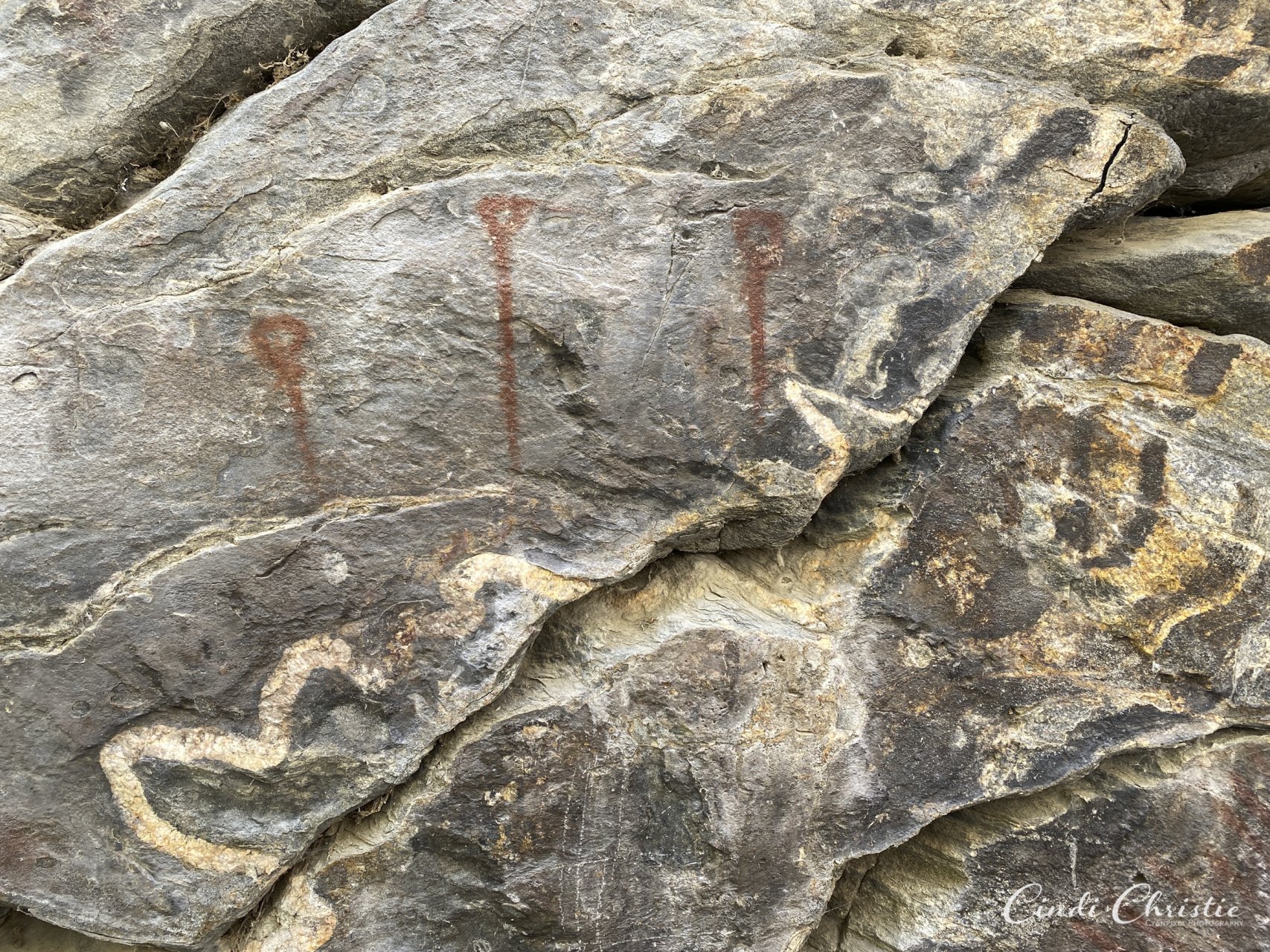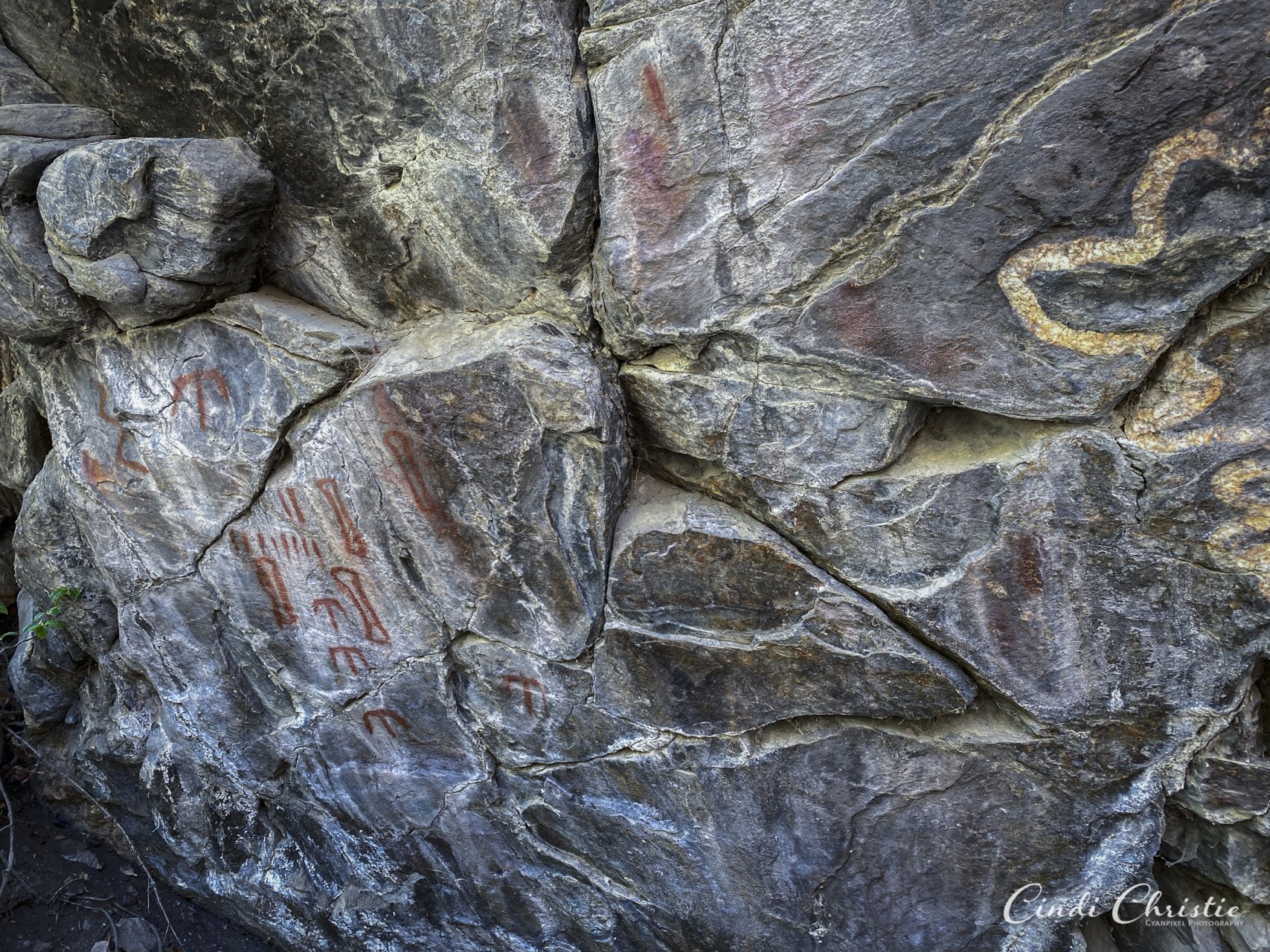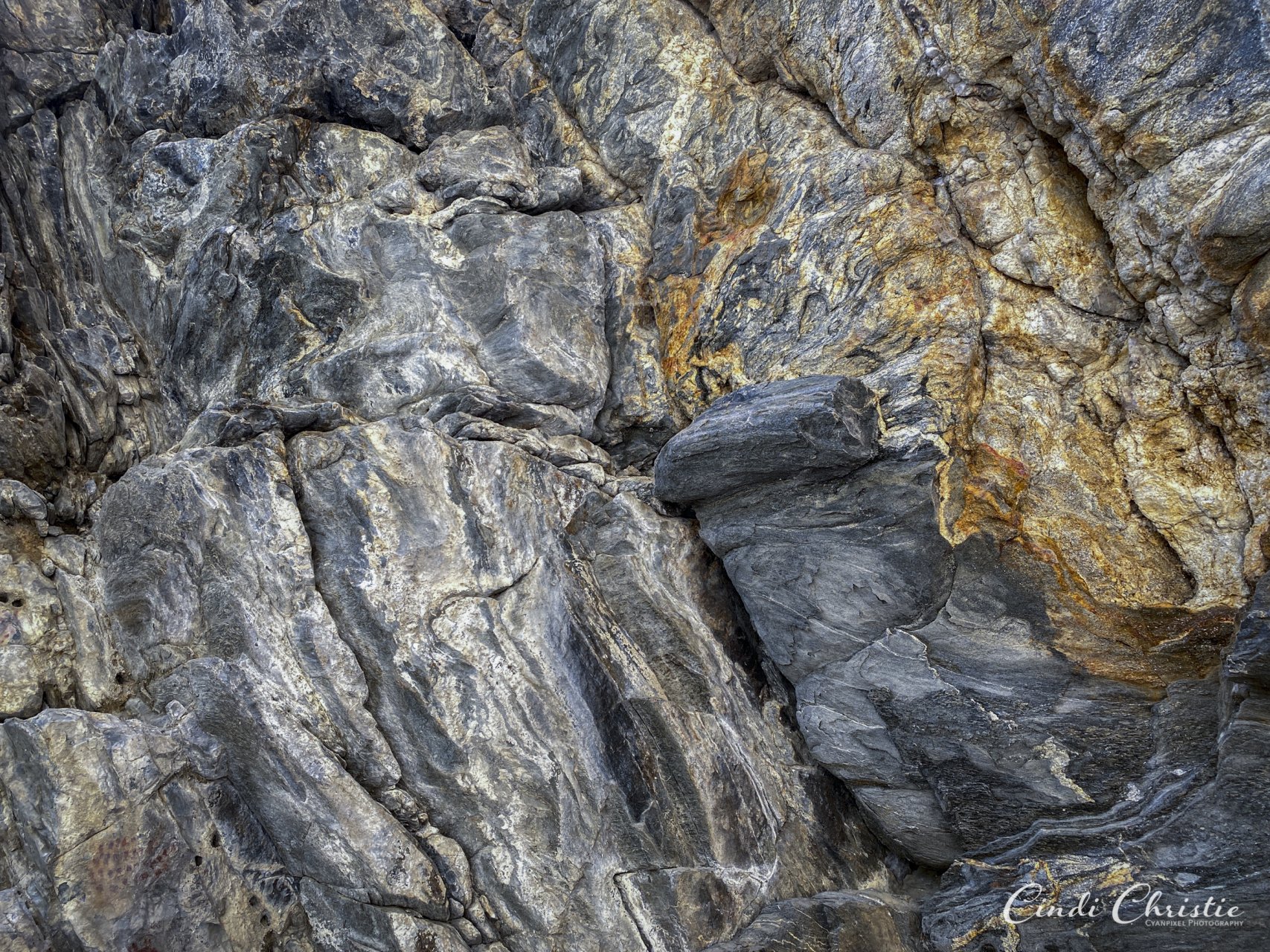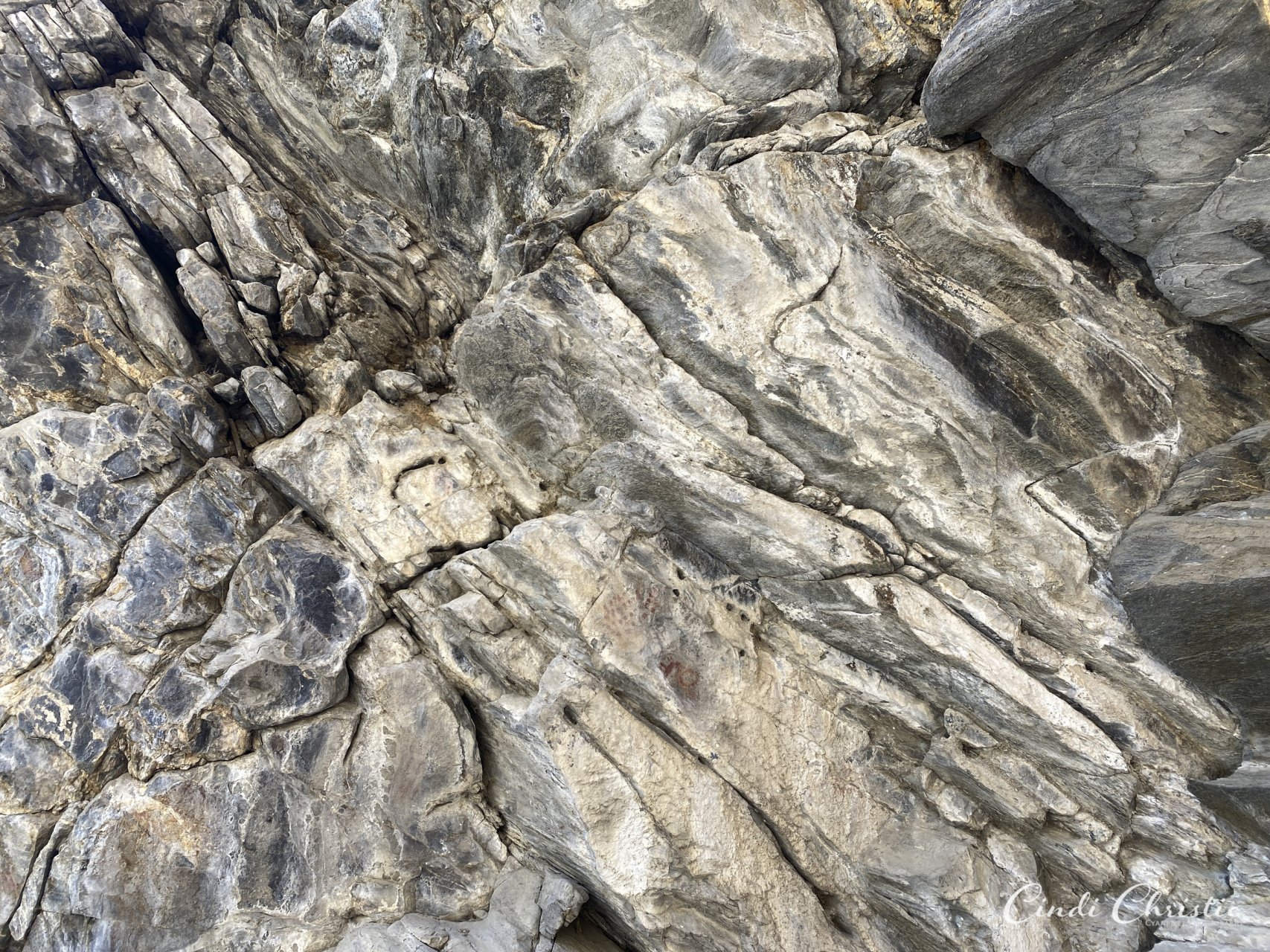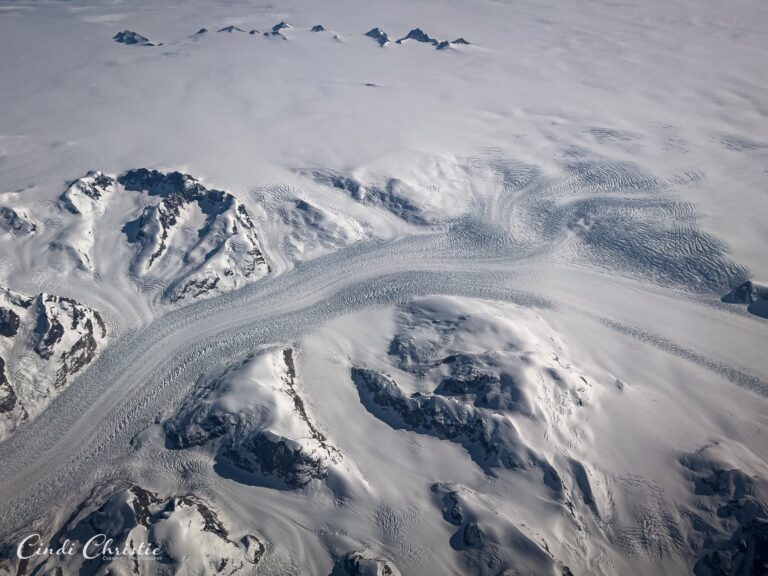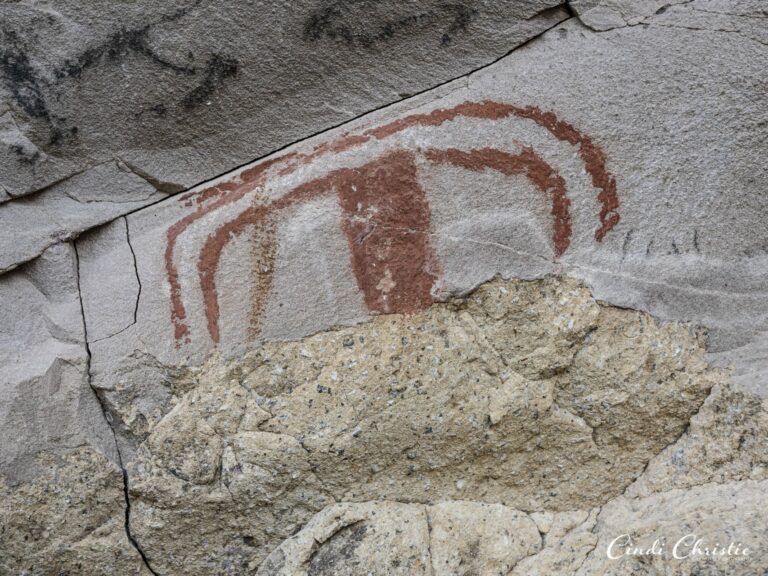The way people communicated visually with each other before the advent of ink and paper has fascinated me. A roadside attraction along the Salmon River offers a geology lesson and pictographs found in the rock formation. An interpretive sign presented by the Salmon-Challis National Forest reads: The pictographs (drawings) on the rock wall … were made with crushed, iron-rich earth and a binder, such as animal fat. They may have recorded the sacred dreams of a shaman (religious leader), or may have been signs telling others about local resources, or have illustrated the tribe’s history.
Seeing these pictographs brought me back to a 2019 hike in Baja California near Loreto, Mexico. The Canipole cave paintings require a lot more effort to see. There are similarities in the colors used on the rocks. Bright orange paintings are found at both. It seems easier to interpret the Canipole illustrations as they more closely resemble birds and fish, while those in Idaho are less specific in my mind.
On a newspaper photo assignment years ago, I visited Vasco Regional Preserve near Livermore, California. Indigenous cave art there had been defaced. Access was only by guided tour. Similar vandalism has marred ancient pictographs and petroglyphs throughout North America. You can’t fix stupid. You also can’t fix what was created ages ago. That’s why I’m not specific about where these can be seen in person, even though they would be well-known to area locals.

